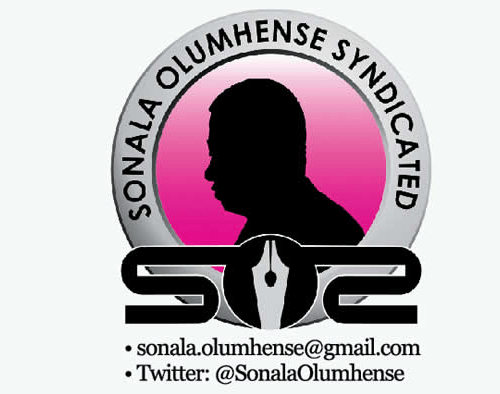The conventional approach to business transformation — top-down directives coupled with bottom-up execution — isn’t working. Today, fewer than one in eight transformations yield lasting results, leaving seven in eight lacking sustained impact. While the traditional top-down method may aid in cost-cutting and efficiency, it fails to produce enduring breakthroughs in business performance.
But why? Because sustained performance improvement isn’t solely about cutting costs; it’s about fundamentally changing how an organization operates and what it achieves. Identifying these necessary changes demands insights and experience that aren’t typically found at the top or bottom of the corporate hierarchy, but rather in the middle.
To elaborate, top-down directives often overlook the subtle nuances crucial for propelling performance to new heights. Executives in the C-suite can become detached from the details of day-to-day operations, leading them to propose solutions that barely scratch the surface. Conversely, frontline managers, although well-versed in operational details, may lack the broader perspective required to spark radical thinking, often resulting in tweaking current practices rather than wholesale changes.
Successful transformations strike a balance — a sweet spot of experience that identifies areas for improvement without succumbing to entrenched routines. This equilibrium frequently resides within the middle layers of an organization. By harnessing the collective wisdom of middle managers and teams, companies can instigate transformations with enduring effects.
Drawing from our research and experience, we identify three strategies as pivotal to effective middle-out transformation:
Enlist your very best middle managers
Transforming a business demands a blend of creativity and ingenuity — attributes that only the very best managers possess. Mediocrity won’t suffice; it’s the cream of the crop who can bring the necessary acumen and experience to spearhead transformative change.
In our article featured in the Harvard Business Review, titled “Transformations That Work,” we delve into the middle-out strategy adopted by Bob Bradway and his team at Amgen, a $27 billion biopharmaceutical company. From the outset of the transformation effort, senior leadership flooded the scene with Amgen’s best talent. For every initiative, two mid-level leaders were handpicked — a VP-level “initiative lead” and a director-level “initiative liaison.” These leaders were fully committed to the transformation, with no distractions. The selection process was rigorous, resembling a draft conducted with the entire CEO team, overseen by the Chief Transformation Officer and the company’s Chief Human Resources Officer (CHRO). Eligible executives had to rank among Amgen’s highest-rated, showcasing their ability to tackle the company’s most pressing challenges.
Once initiative leads and liaisons were established, teams were meticulously assembled based on their competencies and expertise. Leadership underscored the significance of assigning the best talent to each transformation initiative. This approach ensured that the teams possessed the requisite skills to drive meaningful change swiftly.

The transformation journey at Amgen served as a platform for testing and nurturing the next generation of leaders within the company. Many initiative leads and liaisons have since transitioned into senior roles at Amgen, a testament to the success of this leadership development strategy.
Empower the middle to sponsor transformative changes
In many large organizations, there’s often discussion of the “frozen middle,” portraying mid-level managers as lacking inspiration and motivation in contributing to company progress. However, in our experience, very few middle managers truly fit this description. More commonly, the issue stems from a lack of engagement and empowerment. It’s imperative for senior leadership to actively encourage middle managers to bring forth innovative ideas, provide adequate support when these managers propose significant changes, and listen to them when they surface likely sources of resistance.
A prime example of this approach can be seen in the transformation of the French multinational biotechnology company, bioMérieux. In 2020, the company’s leadership made a strategic decision to integrate BioFire, a U.S.-based diagnostics company acquired by bioMérieux in 2014. BioFire’s PCR technology played a pivotal role in providing rapid Covid-19 tests during the pandemic. Pierre Boulud, who would later be appointed CEO of bioMérieux, was entrusted with overseeing this delayed integration. The successful execution of this effort proved instrumental in establishing bioMérieux as a global leader in healthcare diagnostics.
A critical factor contributing to bioMérieux’s success in merging with BioFire was leadership’s adeptness in activating middle management. The company engaged high-potential middle managers from both BioFire and bioMérieux in the US to spearhead the integration. Leadership empowered these mid-level managers by clearly defining priorities for the integration team, providing essential resources, and deputizing them – thereby granting them the authority and means to implement significant changes to the business and strategy of both bioMérieux and BioFire. Furthermore, middle managers at BioFire were encouraged to collaborate with their peers, leaders, and direct reports to discuss proposed changes openly and offer direct feedback to senior leadership in Lyon. This inclusive approach facilitated the identification of potential areas of resistance, thereby enabling effective mitigation planning.
Today, bioMérieux stands as a unified company with a singular purpose: “To make the world a healthier place.” Through pioneering diagnostic solutions, the company aids clinicians in improving patient care and assists industries in preventing contamination of food and pharmaceuticals they produce. Since 2019, the enterprise value of bioMérieux has surged from less than $8 billion to over $13 billion, significantly surpassing the global healthcare sector.
Reward bold action and results
Leaders often express a desire for bold thinking but end up rewarding minor adjustments instead. Successful transformation demands a fundamental reexamination of every aspect of a business to achieve breakthrough results. To achieve this, rewards must reinforce this need for wholesale change.
Take, for example, the transformation of T-Mobile. Prior to 2013, T-Mobile struggled to compete with its larger rivals and consistently ranked last in customer surveys compared to AT&T, Verizon, and Sprint. Following the failed AT&T acquisition of T-Mobile in 2011, John Legere assumed the role of CEO. He introduced the radical concept of “customer focus,” emphasizing the need to understand customer needs and prioritize business processes and offerings accordingly.
Recognizing the importance of the company’s website as a primary point of contact with customers, leadership identified it as a critical area for improvement. At the time, T-Mobile’s website, much like its competitors’, was complex and overwhelming, with numerous tabs leading to irrelevant information. The cross-functional team tasked with revitalizing the website received ambitious yet intentionally vague guidance from leadership, encapsulated by the directive to “do what’s needed to rock the world.” Leadership placed no constraints, trusting the team to devise the optimal solution.
The team defined three specific goals: 1) Enable effortless discovery, sales, and eService; 2) Be simple and straightforward; and 3) Radically reconsider the T-Mobile brand. Rather than proposing minor tweaks, they completely overhauled T-Mobile’s online presence, making it easier for customers to navigate and do business with the carrier online.
The results were remarkable. User satisfaction with the website soared, with the proportion of “highly satisfied” users jumping from 10% to 50%. The website’s “ease of use” increased from approximately 22% to 57%, and the rating for the “shopping experience”, crucial for driving sales growth, improved by 50%.
Impressed by the team’s bold thinking and results, leadership acknowledged the IT team’s leadership role in this effort. This initiative marked a crucial first step in realizing Legere’s vision of making T-Mobile the “Un-carrier.” By setting the ambitious goal of “rocking the world” and rewarding bold thinking, T-Mobile laid the groundwork for its successful transformation.
. . .
It’s time to redefine the approach to transformation. Instead of the traditional top-down targets and bottom-up delivery model, leadership should adopt a middle-out approach. By harnessing the ingenuity and creativity of an organization’s middle management, companies can develop the innovative solutions needed to unlock the full potential of transformation.
www.hbr.org






















